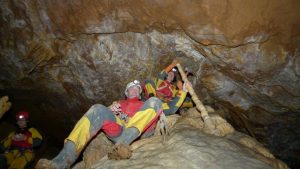Proxy data like tree rings, pollen cores from lakes, and ice cores from glaciers can help scientists decipher the long-range climate history of a location by figuring out how the patterns of pollen or tree rings relate to the temperature and precipitation at the time they were laid down. Cave mineral deposits called “flowstones”(you probably know them as stalagtites and stalagmites) can provide a long look back in time as well due to changes in the chemical characteristics of the water and minerals that were deposited. A new research study shows that the translation of the deposits into useful climate information is tricky and not at all straightforward. You can read more in Eos here.
